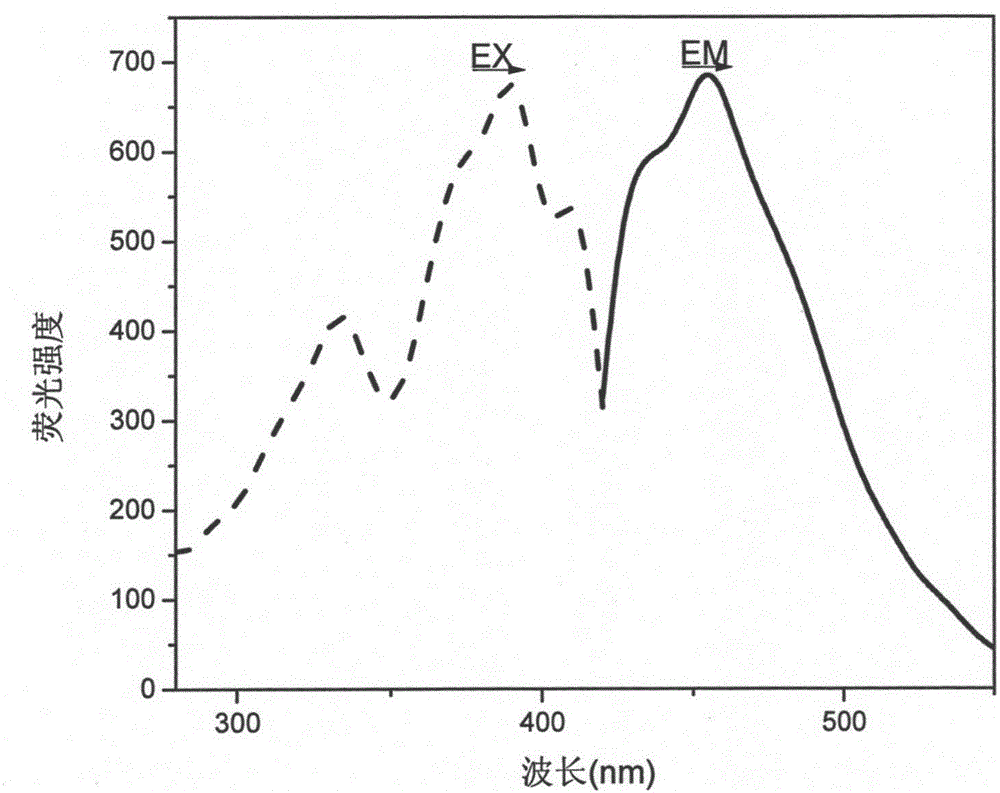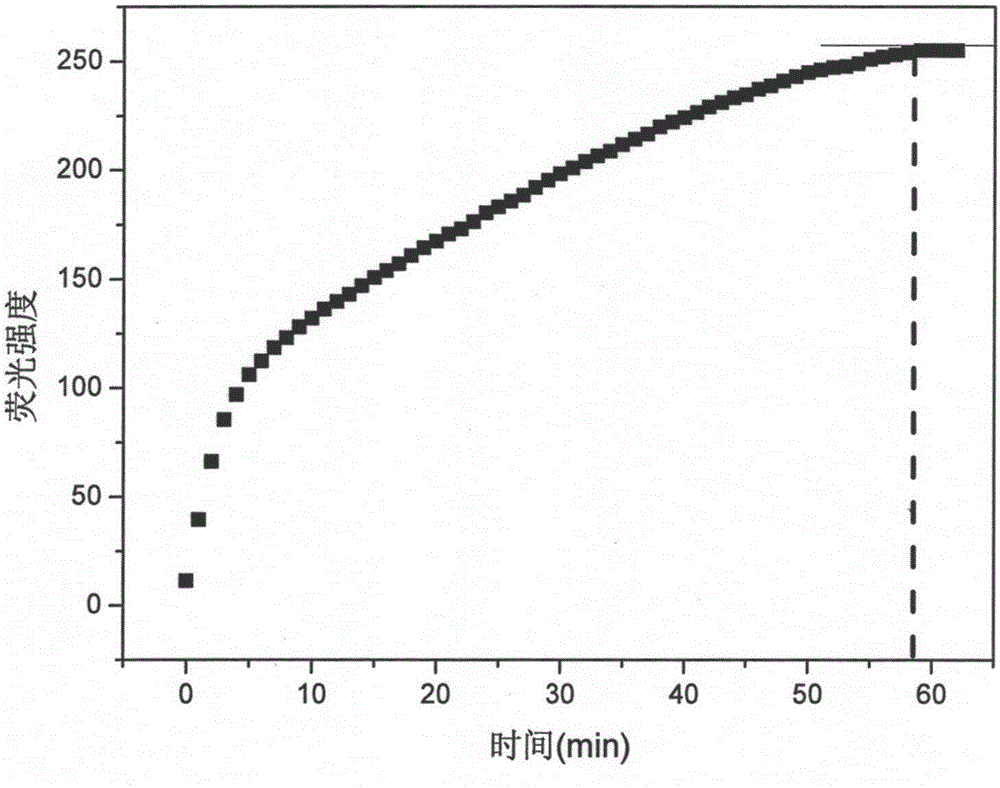Method for detecting aluminum ions by using reactive dye fluorescence probe
A technology of fluorescent probes and reactive dyes, applied in the field of functional reactive dyes and their preparation, can solve the problems of less aluminum ions, no detection range and detection limit of aluminum ions, etc., and achieve good selectivity, low cost, and easy use effect of effect
- Summary
- Abstract
- Description
- Claims
- Application Information
AI Technical Summary
Problems solved by technology
Method used
Image
Examples
Embodiment 1
[0033] Embodiment 1: the synthesis of active dye fluorescent probe
[0034] (1) Synthesis of rhodamine B hydrazide
[0035] Take a 100mL three-neck flask, weigh 1.200g (2.5mmol) Rhodamine B and dissolve it in 30mL absolute ethanol, stir vigorously at room temperature and slowly add 1mL (19.8mmol excess) 98% hydrazine hydrate dropwise. Heat to reflux at 78°C for 2 hours until the solution turns from dark purple to clear yellow. After the reaction is completed, cool to room temperature, and use a rotary evaporator to evaporate the solvent and excess hydrazine hydrate to obtain a light yellow crude product of rhodamine B hydrazide. Take 50 mL of newly prepared 1M HCl and add it to the crude product, and the product dissolves into a pink solution. Slowly add 1M NaOH to the solution under stirring to adjust the pH value to between 9-10. When NaOH was added dropwise to the mixed solution, when the pH of the solution was adjusted to about 6, pale pink flocculent precipitates began...
Embodiment 2
[0047] Configure 8×10 -6 M aluminum nitrate nonahydrate is used as the aluminum ion test solution, and the reactive dye fluorescent probe synthetic in the application embodiment 1 detects the method for the aluminum ion wherein, and concrete steps are:
[0048] Step 1: Dissolve the reactive dye fluorescent probe synthesized in Example 1 in the solvent DMF, and use the solvent DMF to constant volume in a 100mL volumetric flask to obtain a concentration of 1.0×10 -3 For the probe stock solution of M, pipette the probe stock solution into a 100mL volumetric flask, and use the solvent DMF to make up the volume in the 100mL volumetric flask to obtain a concentration of 1.0×10 -4 M probe solution;
[0049] Step 2: Dissolve aluminum nitrate nonahydrate in solvent deionized water, use solvent deionized water to set the volume in a 100mL volumetric flask, and obtain a concentration of 1.0×10 -2 The aluminum ion stock solution of M; pipette the aluminum ion stock solution into a 100mL...
Embodiment 3
[0053] Add aluminum nitrate containing nine crystalline waters to deionized water to obtain an aluminum ion solution with a concentration of 100nM, dissolve the fluorescent probe synthesized in Example 1 in DMF to obtain a fluorescent probe solution with a concentration of 10 μM, and add the fluorescent probe solution to 15ml of fluorescent probe Add 10ml of aluminum ion solution to the needle solution, let it stand for 30min, the excitation wavelength is 390nm, test the fluorescence intensity, the excited state absorption spectrum and fluorescence emission spectrum of the complex of probe and aluminum ion in DMF solution. Such as figure 1 Excited with 390nm light (probe-Al 3+ ) complex, its emission peak is located at 455nm, and the ligand fluorescent probe (10μM) measures the fluorescence intensity at an excitation wavelength of 390nm.
PUM
| Property | Measurement | Unit |
|---|---|---|
| correlation coefficient | aaaaa | aaaaa |
Abstract
Description
Claims
Application Information
 Login to View More
Login to View More - R&D Engineer
- R&D Manager
- IP Professional
- Industry Leading Data Capabilities
- Powerful AI technology
- Patent DNA Extraction
Browse by: Latest US Patents, China's latest patents, Technical Efficacy Thesaurus, Application Domain, Technology Topic, Popular Technical Reports.
© 2024 PatSnap. All rights reserved.Legal|Privacy policy|Modern Slavery Act Transparency Statement|Sitemap|About US| Contact US: help@patsnap.com










